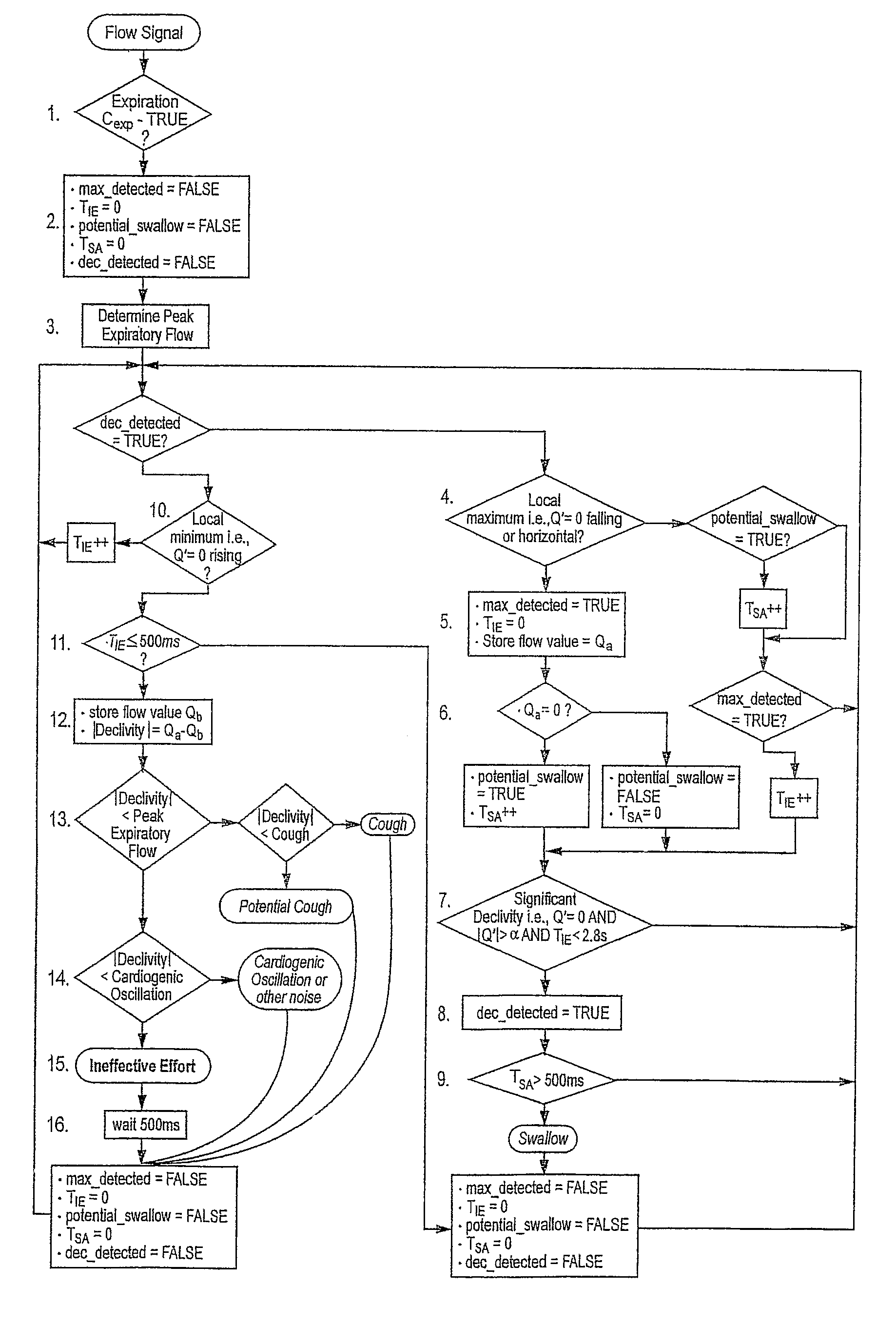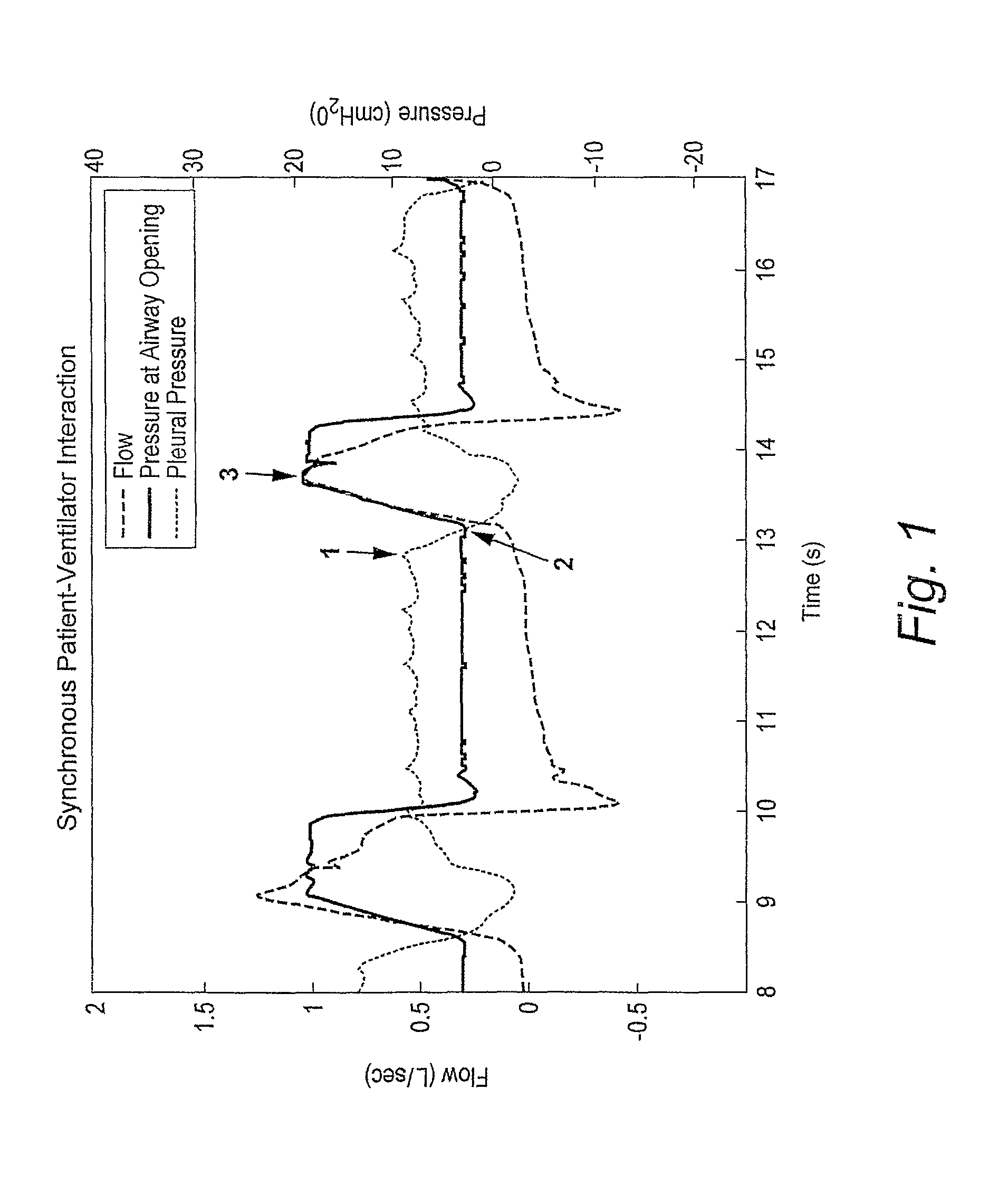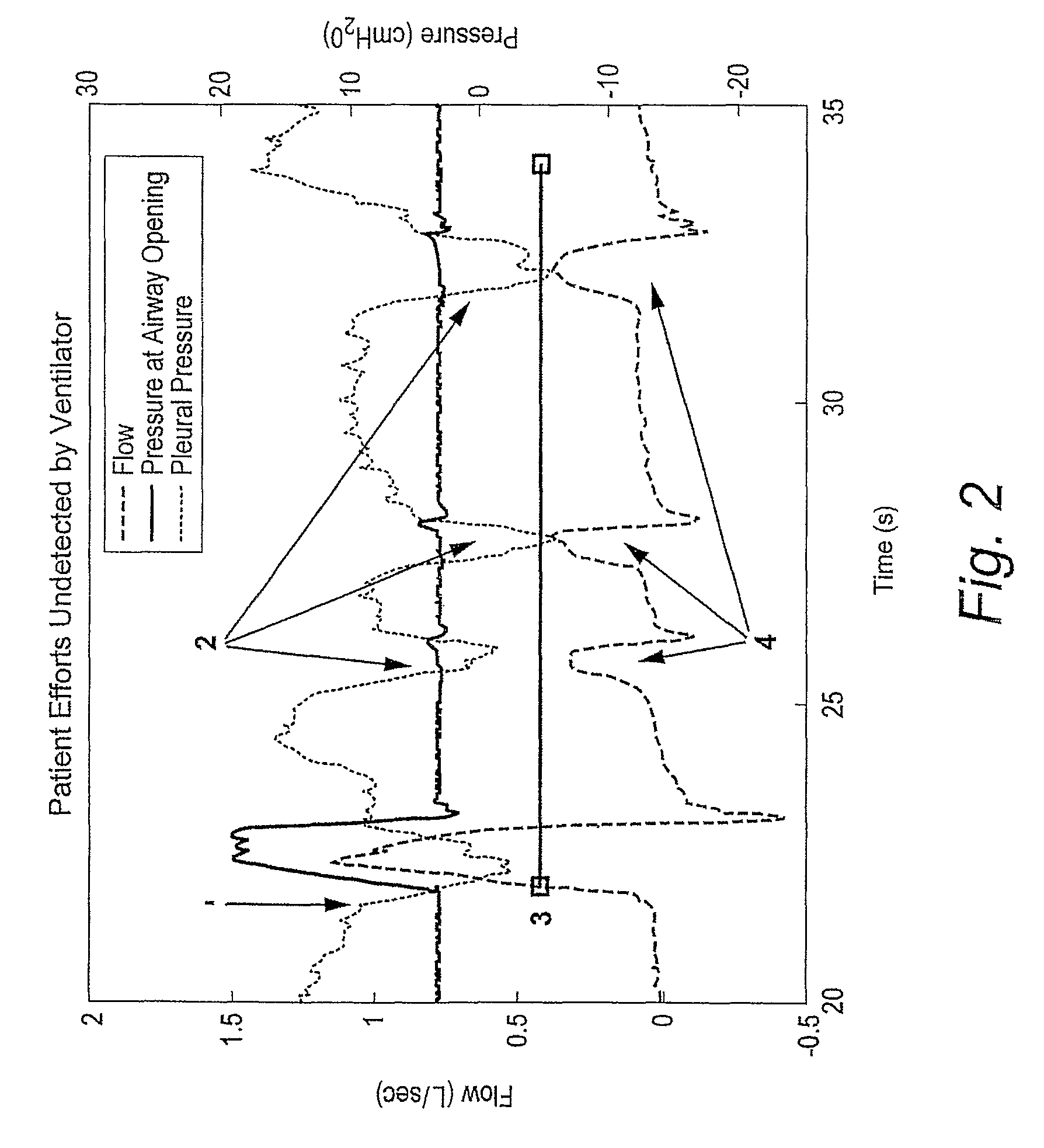Method and apparatus for detecting ineffective inspiratory efforts and improving patient-ventilator interaction
a technology of inspiratory effort and patient, which is applied in the direction of valve operation means/release devices, applications, diagnostic recording/measuring, etc., can solve the problems of insufficient respiratory strength to maintain spontaneous breathing, mechanical ventilatory assistance, and limited expiratory flow, so as to reduce the work of breathing and minimize the index
- Summary
- Abstract
- Description
- Claims
- Application Information
AI Technical Summary
Benefits of technology
Problems solved by technology
Method used
Image
Examples
Embodiment Construction
[0058]While the following embodiments may be explained in terms of a sequential process, it is understood that the process can be carried out using a non-linear, non-sequential, or non-staged process, or the order of the process may be changed. Also while the following describes an entire process, aspects of the invention may relate to only a subset of that process.
[0059]One aspect of the invention is directed to a method for improving patient-ventilator synchrony, and eliminates the need for external sensors, measuring intrinsic PEEP (or by analogy), or modifying / complicating the triggering sensitivity algorithm internal to the ventilator. Rather, it identifies unsupported patient effort exhibited as a specific feature in the flow or pressure signal, indexes their occurrences, and optionally uses the output as an error function that is forced to minimize over time by adjusting various ventilator / environmental parameters. These adjustments are either manual or servo-regulated, and m...
PUM
 Login to View More
Login to View More Abstract
Description
Claims
Application Information
 Login to View More
Login to View More - R&D
- Intellectual Property
- Life Sciences
- Materials
- Tech Scout
- Unparalleled Data Quality
- Higher Quality Content
- 60% Fewer Hallucinations
Browse by: Latest US Patents, China's latest patents, Technical Efficacy Thesaurus, Application Domain, Technology Topic, Popular Technical Reports.
© 2025 PatSnap. All rights reserved.Legal|Privacy policy|Modern Slavery Act Transparency Statement|Sitemap|About US| Contact US: help@patsnap.com



